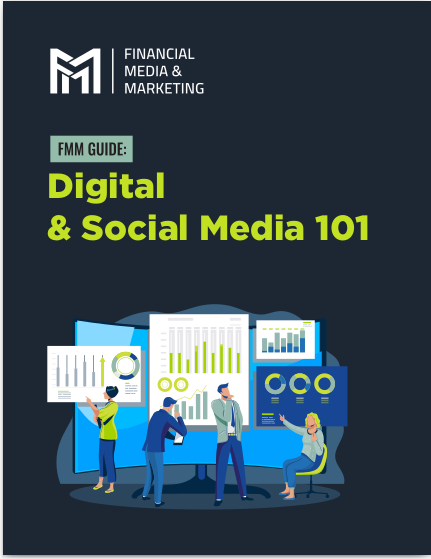Key Takeaways
- A/B testing is a crucial method for optimizing the effectiveness of your financial advisory newsletters.
- Implementing A/B testing can lead to higher client engagement, improved open rates, and more conversions.
What’s A/B Testing? You Need This for Your Financial Advisory Newsletters
In the world of financial advisory, staying connected with your clients and providing them with valuable, relevant information is paramount. One of the most effective tools to achieve this is a well-crafted newsletter. However, even the most thoughtfully created newsletters can benefit from optimization. This is where A/B testing comes into play. By employing A/B testing, you can refine your newsletters to better meet the needs and preferences of your clients, leading to improved engagement and higher conversion rates.
Understanding A/B Testing
Definition and Basics
A/B testing, also known as split testing, is a method of comparing two versions of a piece of content to determine which one performs better. In the context of newsletters, this involves creating two variations of an email and sending them to different segments of your audience. By measuring the performance of each version based on predefined metrics, you can identify which elements resonate more with your clients.
Importance of A/B Testing
A/B testing is crucial for financial advisory newsletters because it allows you to make data-driven decisions. Rather than relying on guesswork or intuition, A/B testing provides empirical evidence about what works and what doesn’t. This can significantly enhance various aspects of your newsletters, such as open rates, click-through rates, and overall engagement, ultimately leading to stronger client relationships and higher satisfaction.
Setting Up Your First A/B Test
Identifying Your Goals
Before you start an A/B test, it’s essential to identify your goals. What do you want to achieve with your newsletters? Common goals for financial advisors might include increasing open rates, improving click-through rates, or boosting conversions (such as scheduling a consultation or downloading a report). Having clear objectives helps you focus your efforts and measure success effectively.
Choosing Elements to Test
Next, decide which elements of your newsletter to test. Some key elements to consider include:
- Subject Lines: The subject line is the first thing your clients see and plays a crucial role in whether they open your email.
- Content: This includes the text, images, and overall message of your newsletter. Testing different content can help you determine what resonates most with your audience.
- Calls-to-Action (CTAs): CTAs guide your readers on what to do next. Testing different CTAs can reveal which ones are more effective at driving engagement.
- Layout and Design: The visual presentation of your newsletter can impact readability and engagement. Testing different layouts can help you find the most effective design.
Creating Variations
To conduct an A/B test, create two versions of the element you want to test. Ensure that each version has only one differing element to isolate its impact. For instance, if you’re testing subject lines, both emails should have the same content, with only the subject line being different. This approach allows you to accurately attribute any differences in performance to the element being tested.
Running the A/B Test
Dividing Your Audience
For an A/B test to be valid, you need to randomly split your audience into two groups. This ensures that any differences in performance are due to the variations being tested, not differences in the audience. Many email marketing platforms have built-in tools to help you randomly divide your audience.
Implementing the Test
Once you have your audience divided and your variations ready, it’s time to implement the test. Use your email marketing platform to send the different versions to the respective groups. Ensure that you run the test for a sufficient duration to gather meaningful data. A test that runs too short might not provide accurate results.
Monitoring Results
During the test, closely monitor key metrics such as open rates, click-through rates, and conversions. These metrics will help you determine which version is more effective. Use your email marketing platform’s analytics tools to track these metrics and collect data in real-time.
Analyzing and Interpreting Results
Comparing Performance
After your test has run for a sufficient duration, compare the performance of the two versions. Look at the key metrics you identified earlier and see which version performed better. It’s important to ensure that your results are statistically significant, meaning that the differences in performance are likely not due to chance.
Drawing Conclusions
Once you’ve compared the performance of the two versions, draw conclusions based on the data. Determine which version was more effective and why. This analysis helps you understand the preferences and behaviors of your audience, allowing you to make informed decisions about future newsletters.
Applying Insights
The insights gained from A/B testing are invaluable for optimizing your newsletters. Use the results to refine your content, subject lines, CTAs, and overall design. Remember that A/B testing is an ongoing process. Continuously testing and refining different elements of your newsletters will help you stay ahead of changing client preferences and industry trends.
Best Practices for A/B Testing
Consistency and Patience
A/B testing requires consistency and patience. Run tests regularly and give them enough time to gather significant data. Rushing through tests or making changes too quickly can lead to inaccurate conclusions.
Testing One Element at a Time
To get clear results, test only one element at a time. If you test multiple elements simultaneously, it becomes difficult to determine which change caused the difference in performance. Isolating each element ensures that your results are reliable and actionable.
Documenting and Learning
Document each A/B test you conduct. Keep track of what you tested, the results, and any insights gained. This documentation helps you build a knowledge base over time, making it easier to plan and execute future tests. It also allows you to learn from past experiments and avoid repeating mistakes.
Iterative Improvement
A/B testing should be part of an iterative improvement process. Use the insights from each test to make incremental improvements to your newsletters. Over time, these small changes can lead to significant enhancements in performance and client engagement.
Wrapping It Up
A/B testing is an essential tool for optimizing your financial advisory newsletters. By understanding what A/B testing is, setting up and running tests effectively, and applying the insights gained, you can enhance your newsletters and better engage your clients. Implement these tips and best practices to ensure that your newsletters are as effective as possible, leading to improved client satisfaction and stronger relationships.
Contact Information:
Email: [email protected]
Phone: 1949245898
Bio:
Madison Browning holds a Bachelor of Science in Business Management and has extensive experience in leadership roles within notable companies. Currently, Madison serves as a marketing specialist for Financial Media Marketing. With a keen eye for design and a passion for storytelling, Madison is also an avid graphic designer and content writer, consistently delivering compelling and visually appealing content.










